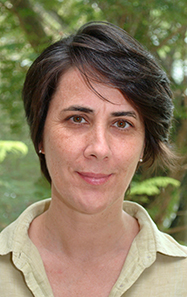
PI, Antónia Monteiro
Professor, National University of Singapore
Department of Biological Sciences
National University of Singapore.
14 Science Drive 4, Singapore 117543
tel: + 65 660 12108.
antonia.monteiro@nus.edu.sg

Tirtha Banerjee
Postdoctoral fellow (and previous PhD student) Tirtha Banerjee explored the processes of early vein patterning and wing development and the role of wnt genes in wing color patterning in butterflies. He is now working on wing-sector specific transcriptomics and attempting to do MER-FISH, a technique that allows the spatial visualization of multiple RNA molecules in a single cell in a pupal wing.

Suriya Murugesan
Postdoctoral Fellow (and former PhD student) Suriya Murugesan is examining the possible GRNs that gave rise to eyespots. He is also testing the genetic basis for eyespot number variation with genetic mapping and CRISPR-Cas9.

Aswathy Nair
Postdoctoral Fellow Aswathy Nair is examining butterfly hearing in the context of mating behavior and how hearing alters specific areas of the brain.

Avinaash Subramaniam
PhD student Avinaash Subramaniam is working on the evo-devo of larval eyespots and on the role of genes that show eyespot-specific patterns of expression.

Kian Long Tan
PhD student Kian Long is working on the evo-devo of lungs and terrestrialization in isopods.

Shao Yufeng (Chelsea)
PhD student Chelsea is investigating the formation and duration of long-term odor associative memories in B. anynana butterfly larvae.
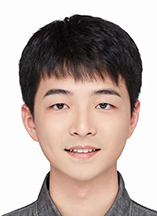
Zeyu Yang
PhD student Zeyu is investigating comparative brain development in B. anynana, Danaus plexipus, and Heliconius charithonia butterflies using single-cell sequencing.

Louna Royer
PhD student Louna is investigating the evo-devo mechanisms of sound production in crickets, which are located on the wings.

Ler Shan Ang
Undergraduate student Ler Shan is investigating the cis-regulatory architecture of the yellow gene in Pieris canidea butterflies

Jeriel Lee
Undergraduate student Jeriel is interested in the molecular mechanisms that differentiate wings in early embryonic development and also in the genes that determine the proximal-distal axis of the wing.

Judith Han
Undergraduate student Judith Han is exploring how the fluorescent patterns on the wings of males of Papilio demoleus are produced at the physical level, and whether the gene doublesex is responsible for the observed sexual dimorphism .

Roy Quah
Undergraduate student Roy is working on the role of Toll receptors in B. anynana wing patterns, and testing the expression and function of a series of other genes in the development of eyespots and limbs.

Javen Tan
Undergraduate student Javen is working on very early wing development and the processes that set up the veins.

Lu Wee Tan
Laboratory technologist, Lu Wee Tan, is in charge of providing safety training to all lab members, as well as ordering consumables, equipment, etc.
Former Lab Members

Cédric Finet
Postdoctoral Fellow Cédric Finet examined the evolution of blue and green scale colors, and associated morphologies, across a phylogeny of all butterfly families. He also worked on a variety of other biophotonic projects.

Brian Hanotte
PhD student Brian Hanotte worked on the evolution of eyespots across the Lepidoptera, as well as saturniid moth eyespots in more detail.

Shao Ying Low
Undergraduate student Shao Ying examined how adult male butterflies of the WS and DS forms respond to playback sounds of conspecific males either courting females or simply flying about.

Isabel Lee
Undergraduate student Isabel worked on butterfly larvae innate color preferences and discovered larvae of B. anynana prefer to walk towards green, then red, then purple, and finally blue.

Yan Ling Chua
Undergraduate Yan Ling performed a series of experiments where she injected isoamyl acetate (IAA)directly into larvae, at different concentrations, and showed that the recipients, and their naive offspring, developed a preference (at low concentration) or avoidance (at high concentration) to IAA.

Beatriz Willink
Postdoctoral Fellow Beatriz Willink examined the genetic and developmental basis of a female-limited polymorphism in damselflies that allows some females to mimic blue males, and other females to be brown and cryptic.

Shen Tian
Postdoctoral fellow (and previous PhD student) Shen Tian compared the set of microRNAs expressed in the wings of dry and wet seasonal forms of Bicyclus anynana. He also tested the role of the Hox gene Antennapedia in the origin of eyespot size plasticity in Satyrid butterflies, and the role of two micro-RNAs in the development of melanism in the wings of members of three butterfly families.

Hong Ru
Postdoctoral fellow Hong Ru worked on scale development in butterflies and tested the role of Calreticulin in scale development, as well as other genes that differentiate silver and brown scales.

Emilie Dion
Postdoctoral fellow Emilie Dion tested how exposure to pheromone odors in Bicyclus anynana females altered their brain and antennal gene expression profiles.

Jocelyn Wee
Postdoctoral fellow (and previous PhD student) Jocelyn Wee explored gene expression differences between spots and eyespots to try and understand what makes these two wing patterns different.

Zylla Yu
Masters student Zylla Yu is testing the function of Frizzled 2 in eyespot and color pattern development in B. anynana butterflies.

Gowri V.
PhD student Gowri V. worked on larval odor learning in Bicyclus anynana. She tested the phenomenon of genetic accommodation and also the molecular mechanism of inheritance of learned odor preferences.

Chen Xiaoqing
Masters student Chen Xiaoqing attempted to produce wingless black soldier flies for purposes of food waste management. She targeting the vestigial gene with CRISPR-Cas9, and worked together with Assistant Professor Nalini Puniamoorthy.

Sean Khor
Masters student Sean Khor worked on a protocol for embryo cryopreservation in Bicyclus butterflies
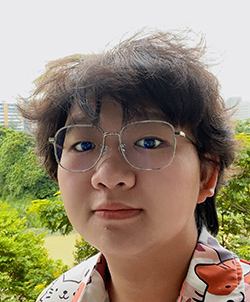
Jin Ziqi
Master student Jin Ziqi examined male courtship behavior.
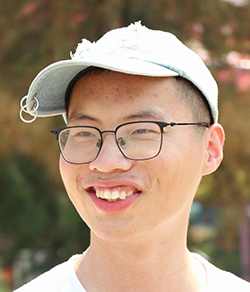
Wang Yehan
Master student Wang Yehan tested the function of several genes in Bicyclus anynana wing color patterning.

Qing Ting
Master student Qing Ting tested the localization of the odorant receptor co-receptor (ORCO) in Wt and ORCO mutant adult brains of male and female Bicyclus anynana butterflies, as well as characterized the behavior or larvae and adult Wt and ORCO mutants to different odors.

Wui Seng Khoo
Honors student Wui Seng Khoo mapped the position of the missing mutation in the genome of Bicyclus anynana butterflies. This mutation removes two eyespots from the hindwing.

Wesley Lincoln
Honors student Wesley Lincoln worked on the genetic basis of a female-limited color polymorphism in Ischnura senegalensis damselflies.

Shaun How
Undergraduate student Shaun How tested the function of the genes vermilion and cinnabar in eye and wing pigmentation.

Yi Peng
Research Assistant Yi Peng worked on imaging adult brains of female B. anynana butterflies before and after they are exposed to sex pheromones. She showed that certain areas of the brain change in size with the odor exposure.

Heidi Connahs
Postdoctoral fellow Heidi Connahs studied the role of cis-regulatory elements on eyespot development using FAIRE-Seq and CRISPR experiments. She also examined how the methylome of antennae change after an odor exposure.

Maniza Huq
Masters student Maniza Huq testes whether eyespots are indicator traits that correlate with female fecundity.
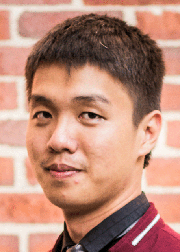
Galen Tiong
Research Assistant Galen Tiong tested the role of regulatory elements in driving reporter gene expression in transgenic butterflies. He also tested the role of butterfly hearing in mating behavior.

Ilbert Chong
Honors student Ilbert Chong documented the reactions of two populations of long-tailed macaques in Singapore, towards human observers.

Ruoxin Zheng
Ruoxin worked on the role of the odorant receptor co-receptor (ORCO) gene in Bicyclus anynana courtship and mate choice.

Anupama Prakash
Postdoctoral fellow Anupama Prakash performed single-cell sequencing on developing butterfly wings to assign transcripts to particular colored scales. She also worked on the evolution of sexual dimorphism and in the evo-devo of structural colors on the wings of Junonia butterflies.

Yuji Matsuoka
Postdoctoral fellow Yuji Matsuoka investigated the role of multiple pigment pathway genes and Hox genes in color pattern development using CRISPR. He also discovered that prolegs are novel traits, and introduced a PhiC31 landing pad in Bicyclus for future work with reporter constructs.
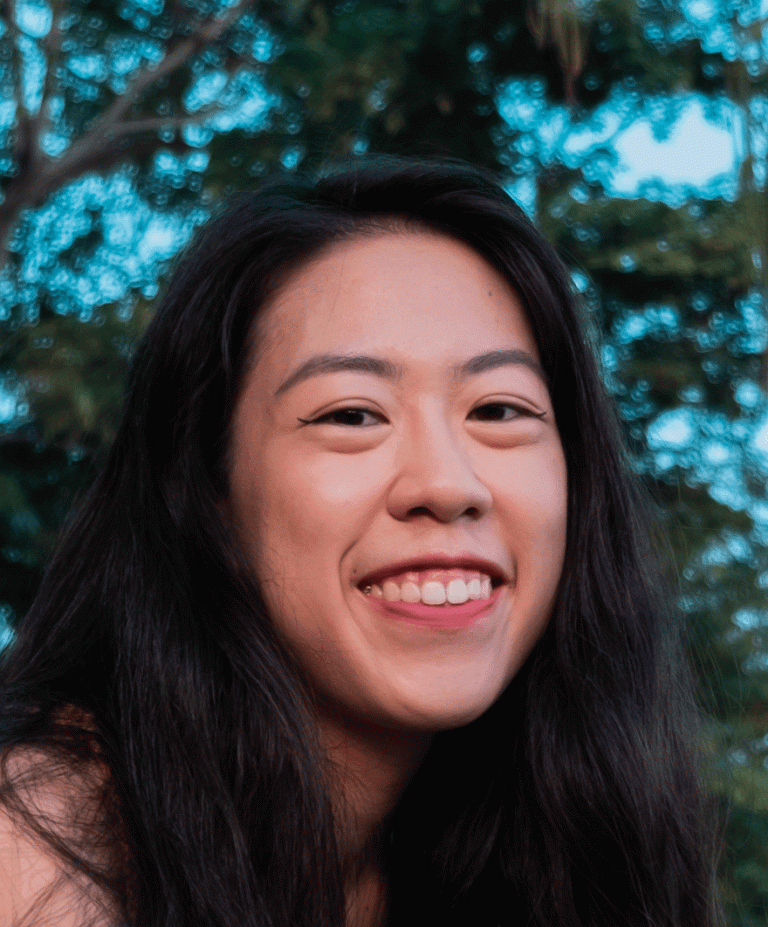
Beverly Wong
Undergraduate student Beverly Wong created a series of mutant lines for the odor receptor co-receptor gene (ORCO), in Bicyclus butterflies.

Juan Olvido
PhD student Juan Olvido explored the physiological correlates of white and brown eyeballs (yes, eyeballs, not eyespots) in two species of Orangutans from SE Asia., and worked on the evolution of coloration in a variety of primate eyes.

Ian Chan
Postdoctoral fellow Ian Chan worked on the evolution of color on the wings of butterflies.

Dantong Zhu
Postdoctoral fellow Dantong Zhu worked on mapping the Missing gene in Bicyclus anynana, a mutation that removes two eyespots from the hindwing. He also described the levels of 20E, RNAs, and microRNAs in embryos of B. anynana with the goal of examining whether these molecules are correlated with butterfly sex.
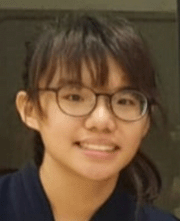
Yi Xi Loo
Undergraduate student Yi Xi Loo worked on the function of the gene Aristaless in eyespot and claw development in butterflies.

Yi Ting Ter
Honours student Yi Ting Ter investigated the male coutship behavior of yellow mutant B. anynana butterflies comparatively to Wt male

Honours student Dean Tin Shuen Yew worked on sexual imprinting in Asian human males and females

Masters student Zohara Rafi conducted field tests of predation on Bicyclus butterfies to test the role of UV-patterns and eyespot number on attack risk in the wild.dent Dean Tin Shuen Yew worked on sexual imprinting in Asian human males and females

Honours student Ling Sheng Loh investigated the role of Armadillo in eyespot and spot development using CRISPR-Cas9
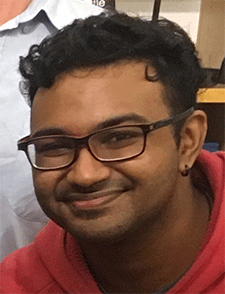
Honours student Sharran Rajendran investigated the role of a novel Distal-less CRE in wing and eyespot development using CRISPR-Cas9.
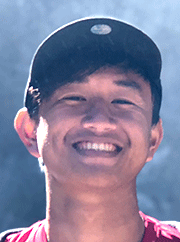
Visiting student, Lin Naing, from Monash University, tested how variation in eyespot number in B. anynana affects predation risk by praying mantids in mesocosmos experiments.

PhD student Shivam Bhardwaj compared mechanisms of eyespot plasticity across nymhalid butterflies. He explored the developmental/molecular origin of eyespot size plasticity.

Visiting undergraduate student, Gowri V, worked on the transmission of novel learned food odors to the next generation in Bicyclus anynana larvae.

Visiting undergraduate student, Athmaja, worked on the transmission of novel learned food odors to the next generation in Bicyclus anynana larvae.

Postdoctoral fellow Eunice Tan investigated the set of genes that are differentially expressed in male pupal brains of wet and dry season forms, as well as hormone-manipulated brains, and identified candidates that may cause the different sexual behaviors of these males.
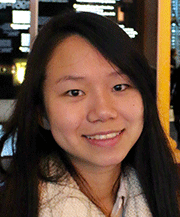
Master’s student (and former Honors student) Li Xian Pui showed that Bicyclus anynanafemales that learn to prefer new pheromone blends pass on that preference to their female offpring. She also explored whether epigenetic inheritance is involved in this process.

Honors student Jeremy Pang tested the role of a sex pheromone odor receptor in sexual behavior using CRISPR-Cas9.

Honors student Khai Ann Hiew tested whether the false 3D head of the Common Red Flash butterfly, Rapala iarbus iarbus, may give it a protective advantage in interactions with invertebrate mantid predators

Postdoctoral fellow Kathy Su was interested in the role of doublesex in promoting the development of a novel male-specific sexual organ in the abdomen of sepsid flies. Kathy had her own independent funding (She was a Lee Kuan Yew fellow).

Honors student Yue Qian Tan, tested the effect of “haze” on butterfly growth rate and survival.

Undergraduate student Ling Sheng Lohinvestigated the temporal and spatial expression of wingless genes on developing butterfly wings.

Honors student Xiang Hui Low was interested in undertsanding the process that restricts mimicry of distatesful models to females of Papilio polytes butterflies. He tested whether P. polytes females differed in their mate preferences towards artificially colored mimetic males and typical non-mimetic males.

Honors student Brent Tan tested the role of the banding pattern and the head-to-tail mimicry in the Banded Swallowtail butterfly (Papilio demolion demolion) with paper models in the wild.

Research Assistant Jonathan Peh Jun Jietested the role of three candiate genes in the regulation of eyespot number variation (between Spotty mutants and Wildtype individuals) using CRISPR-Cas9

PhD student Nesibe Ozsu identified members of the eyespot gene regulatory network during early pupation using RNA-seq. She also tested the role of wingless in eyespot development using transgenenic lines.

Undergraduate student Tricia Looinvestigated the process of eyespot center differentiation using computer modeling.

Visiting undergraduate student Sarah Monroetested the role of the gene Spalt in eyespot and wing development in Bicyclus anynanabutterflies.

Postdoctoral fellow Arjen van ‘t Hof mapped the mutation, Spotty, that introduces two extra eyespots on the wings of B. anynanabutterflies.

Masters student Jelle van Creij, visiting from The Netherkands, tested the role of Distal-less in eyespot development using CRISPR-Cas9

Honors student Swit Yee Ng tested how dry season males invest in reproduction when mated with females with manipulated sexual ornaments.

Honors student Jocelyn Wee tested whether different colors on the wings of the Painted Jezebel (orange, yellow, white and black) function as aposematic colors using manipulated paper models in field experiments.

Honors student Kenneth Neo tested whether learned visual mate preferences lead to different levels of opsin expression in B. anynana females.

Honors student Qian Yi Chan tested the role of knocking-down the signaling ligand wingless on eyespot size in Bicyclus anynanabutterflies.

Honors student Shearel Sim tested the function of candidate cis-regulatory elements for eyespot genes using CRISPR-Cas9

Undergraduate student, Soo Yee Ng, tested the role of the conspicuous wing flaps in the Red Flash butterfly using mantid predators and paper models of the butterflies.

Undergraduate student, Yue Qian Tan, tested the predation risk of mimetic and non-mimetic wing patterns in Papilio polytes butterflies using paper models in the field.

Postdoctoral fellow Luqman Aslam mapped the genomic region responsible for a eyespot number variant of Bicyclus anynana, Spotty, with four eyespots on the forewing instead of the usual two eyespots, using RAD-Tags.

Postdoctoral fellow Mainak Das Guptaidentified a series of putative cis-regulatory elements of eyespot genes expressed during the larval and pupal stages of development using FAIRE-Seq.

Postdoctoral fellow Katy Prudic tested why males and females both have “ornaments”, i.e., eyespots, on the hidden surfaces on their wings. She showed that both sexes display these eyespots to the opposite sex during courtship. This behavior is phenotypically plastic, however, and wired during larval/pupal development. Katy also studied the role of insect predators in maintaining the phenotypically plastic ventral wing patterns in Bicyclus anynana and examined the physiological mechanisms underlying dorsal eyespot size and brightness plasticity.

Honors student Zhe Ching Ngan showed that mantid predators have a different attack behavior toward butterflies with different eyespots on the forewing ventral surface.

Visting undergraduate student Sam Chandocumented the loss of green fluorescence in the eyes of a transgenic line of Bicyclus anynana butterflies with adult age.

Honors student Melissa Teo Hui Jing worked on the molecular basis of sexual dimorphism in butterflies.

Honors student Sebastian Ho worked on the function of eyespots in the field using natural predators. He tested how eyespot size and eyespot number alters eyespot function from intimidating to attracting predators.

Undergraduate student Jonathan Peh Jun Jietested whether learned preferences can be passed on to the next generation.

Postdoctoral fellow Bethany Wasik worked on an artificial selection experiment to produce violet structural colors on the wings of B. anynana. She also worked on the positional cloning of an eyespot network “switch” locus, Spotty, using RAD-tag markers.

Undergraduate student Stacey Yuen tesed the function of a very interesting wing pattern in a local moth species using manipulations in paper models and natural predators.

Graduate student Ashley Bear explored the (neuro)physiological and genetic basis of courtship reversals induced by environmental temperature in male and female Bicyclus anynana. She previously worked on the physiological/behavioral traits of a dark larval color mutation also in Bicyclus .

Graduate student April Dinwiddie worked on the development of structural colors in butterfly wings. She is also interested in exploring the evolution and development of wing scales across insects.

Undergraduate student Chris Tokitaperformed a survey of eyespot sexual dimorphism across 450 species of Nymphalid butterflies and discovered that females, on average, have more eyespots than males, and that “hidden” dorsal and forewing surfaces are disproportionately more dimorphic than “exposed” ventral hindwing surfaces.

Graduate student Erica Westerman worked on the role of learning in shaping female preference for novel male wing patterns. She showed that females don’t have fixed preferences for males with particular wing patterns and can learn to prefer males with novel patterns. She also showed that smell is an important mediator of visual learning.

Postdoctoral fellow Xiaoling Tong tested the function of the hox gene Ultrabithorax in regulating eyespot patterns in Bicyclus anynana. She used transgenic tools to down-regulate Ubx at different times during development. Xiaoling also described the expression of Ecdysone Receptor (EcR) on the wings of Bicyclus anynana.

Postdoctoral fellow Jeffrey Oliver mapped the evolution of eyespots on the phylogeny of nymphalid butterflies. He also did comparative gene expression work in a variety of nymphalid species to understand the evolution of the eyespot developmental gene network. He discovered that eyespots evolved once, at the base of the nymphalid clade, and that many of the genes associated with early eyespot development were probably co-opted as a cluster, from a preexisting network.

Graduate student Karin van der Burg completed her MS degree in the lab. She examined how the expression of Wingless and Decapentaplegic were alterered by over-expression of Ultrabithorax in early pupal wings.

Undergraduate student, Andrew Everett described eye sexual dimorphism and morphological plasticity in Bicyclus anynanaacross a temperature gradient.

Visiting undergraduate student, Joseph Walker, from Purdue University worked on black spot formation in the Cabbage White Butterfly, using classic cell ablation techniques in live pupal wings.

Postdoctoral fellow Andrew Stoehrdeveloped functional genetic tools for the Pieris rapae in order to understand the developmental basis of phenotypic plasticity in this species. He also performed comparative gene expression work across the Pieridae.
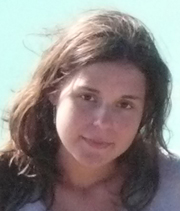
Visiting Ms student, Carole Bastianelli, from Lyon, France worked on describing the expression dynamics of the Ecdysone Receptor in Bicyclus wings of the wet and dry seasonal forms. This work will help us understand how the endocryne system evolved to regulate a classic seasonal polyphenism in a butterfly wing pattern.

Undergraduate student Anna Lindemannworked on the role of the hedgehog signaling pathway in differentiating eyespot centers.

Paleontology graduate student Joanna Wolfe is interested in understanding the evolution of the short anterior pair of legs of nymphalid butterflies (the brushfoots), both at the molecular level and through the fossil record.

Paul Shamble photographed most of the nymphalid butterflies in the collection at the Peabody Museum (~1500 species). This will allow us to answer many questions about the evolution of wing patterns in this group using the comparative method.

Postdoctoral fellow Ondrej Podlaha tested the function of the hox gene Ultrabithorax in regulating eyespot patterns in Bicyclus anynana. He used transgenic tools to over-express Ubx at different times during development and characterized both Ubx mRNA expression and the adult wing pattern phenotype. He is interested in molecular evolution and in testing ideas of gene network co-option at the empirical level.

Rotating graduate student Andrea Hodgins-Davis worked on the role of prior experience in female mate choice.

Undergraduate student Robert Tunneyworked on the developmental evolution of eyespots in local CT nymphalid butterfly species.

Undergraduate student, Ariel Simons, from the University of Rochester, worked out the genetics of a new spontaneous mutation in our stock that produces a dark larval cuticle. She visited us during the summer of 2008.

Undergraduate student Lee Driftmier tested the role of the sexually dimorphic black spots on the wings of Pieris rapae in the context of female choice.

Graduate student Diane Ramos worked on the development of a laser-mediated heat-shocking mechanism that enables the spatial control of transgene expression on the pupal wing. She cloned several copies of the Engrailed gene and tested their localization using in-situs. She tested the role of over-expressing the transcription factor Spalt in vein and eyespot development.

Visiting scientist, Bin Chen, cloned a series of transcription factors from B. anynana in order to test their function in wing and color pattern development. He also developed new piggyBac vectors for both ectopic expression as well as gene knockdown via transgenic RNAi.

Graduate student Kendra Roberston tested whether color pattern differences on the wings of males have an effect on female preference. Kendra also mapped the evolution of wing patterns of 54 of the 80 members of the genus Bicyclus on the phylogeny of the genus.

Jessica Decker was a visiting student from the Concordia College Moorhead in Minnesota who worked in the lab during the Summer 2007 on sexual selection in Pieris butterflies.

Lisa Fazzino was a visiting high-school student from Wallinford, CT, who helped us gather functional data for some transgenic lines of Bicyclus. She and Jessica also worked together on developmental perturbations of Pieris wing patterns.

Undergraduate student Mark Fisher tested the role of behavioral plasticity in female choice in Bicyclus anynana

Graduate student, Gary Glaser, cloned the wingless gene from B. anynana and determined that this gene is expressed in the eyespot centers in developing pupal wings using antibody stainings.

Graduate student, Firdous Kamal, from the Department of Electrical Engineering, developed a new laser system in order to heat-shock the pupal wing epidermis of Bicyclus anynana without killing the cells.

Graduate student, Katie Costanzo, worked on the relative role that male phenoromes and visual signals play in female choice in Bicyclus anynana.

Graduate student, Kyle Golden, worked on developing a “fast” method to introduce genes into wing epidermal cells, using in-vivo electroporation.

Undergraduate student, Min Guo, worked on testing the role of Distal-less in eyespot development.

Undergraduate student, Andrew Goldman, continued working on the color learning ability of young virgin female butterflies, and how early experience with particular color patterns influences subsequent mate choice.
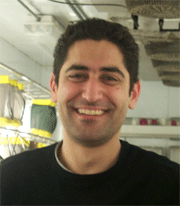
Undergraduate student, Taid Rahimi, worked on the color learning ability of young virgin female butterflies, and how early experience with particular color patterns influences subsequent mate choice.

Undergraduate student, Veena Raju, helped develop a “fast” method to introduce genes into wing epidermal cells, using in-vivo electroporation.

Graduate student, Sara Kremmer, worked on an educational-research project. She helped develop a new course syllabus for the Evolutionary Genetics course that integrates quiz questions, homework and class exercises to improve student learning.

Undergraduate student, Sam Arbesman, worked on a web based animation (Ancient Wings) that reconstructs the putative ancestral wing patterns of 54 of the 80 species of Bicyclus butterflies, and morphs these patterns across the phylogenetic tree of Bicyclus.
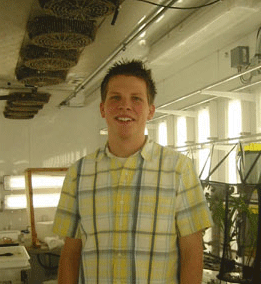
Undergraduate student, Steven Stockslager, worked on the effect of wing damage on the activation of certain transcription factors around the site of damage. Damage ultimately results in the production of an ectopic eyespot on the wings.

Undergraduate honors student, Nathan Markwarth, worked on developing a “fast” method to introduce genes into wing epidermal cells, using in-vivo electroporation.

Undergraduate student, Laura Blodgett, visiting from Rochester University, worked with paper models of Bicyclus butterflies to determine to what extent males detect conspecifc females based on visual cues.

Undergraduate student, Jarod Masci, developed a new protocol to dechorionate eggs and visualize the early embryos of B. anynana. He co-authored a paper, as first author, in the journal Zygote.

Undergraduate student, Sashti Balasundaram, together with rotating graduate student, Nathan Kirk, developed a protocol for artificially inseminating B. anynana butterflies, using whole spermatophore transfers into virgin females.

Undergraduate student, Laura Falkowski, tested whether the presence of extra eyespots on the dorsal surface of the wings of B. anynana males is more attractive to females relative to the wild type pattern.

Undergraduate student, Lauren Scott, tested the effects of two mutations, Missing and Spotty, when in homozygote and heterozygote condition, and when present simultaneously in the same genome. She found that each mutation is codominant relative to wildtype and influences both the fore and hindwing pattern of Bicyclus anynana. These mutations also display an epistatic effect when present together in the genome.

Postdoctoral Fellow Jeffrey Marcus developed the first line of transgenic butterflies.
